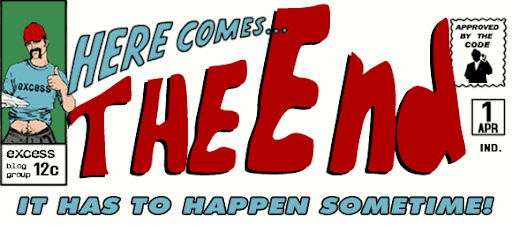Who the Hell is: Ferdinand de Saussure
 The Just: Ferdinand de Saussure should be as well known as Freud but unfortunately he lacked the iconic facial hair and obsession with cocaine. Saussure, the third useful thing to come out of Switzerland (after chocolate and pocket knives), was a linguist and is widely recognized as the father of structuralism (a theoretical movement that seeks to find the underlying structure of everything).
The Just: Ferdinand de Saussure should be as well known as Freud but unfortunately he lacked the iconic facial hair and obsession with cocaine. Saussure, the third useful thing to come out of Switzerland (after chocolate and pocket knives), was a linguist and is widely recognized as the father of structuralism (a theoretical movement that seeks to find the underlying structure of everything).Born on November 26, 1857, to a family with a long tradition in the physical sciences, Saussure was set to continue this tradition but after his first year of university settled into linguistics. In 1880 he received his doctorate and spent the rest of his life working as an academic.
Saussure was terrified of publishing his work until he felt that it was 100% accurate. Thus for an extraordinarily respected scholar he had a rather dismal portfolio. In fact in 1906 he almost never took the position that would lead to his greatest work.
From 1906 till 1911 Saussure taught a course in general linguistics at the University of Geneva. Shortly after this he died from cancer in 1913. Fortunately for Saussure two of his students would turn his final course into a book with the very original title of A Course in General Linguistics. The book became an instant classic and Saussure became a household name (provided a linguist lived in the household).
The Scandal: Nothing, the man couldn’t even publish his own work, with the majority of his writings being published posthumously. Maybe he’s tearing up the afterlife.
Probably Not True: Reportedly started every lecture with the phrase, “It’s hammer time!” Good steal, MC.
Key Concepts: Saussure’s concepts are vital for anyone seriously considering analyzing cultural phenomena, such as Eminem’s homoerotic obsession with Moby.
No 1. It’s a Sign:
For Saussure humans are creatures that use, generate and interpret signs in order to find meaning and just generally function. For example the alphabet is a group of 27 signs, which can be rearranged in different combinations to form further signs called words. But it doesn’t end there; if you draw a stick man you’ve also just drawn a sign. If you take a photograph you’ve just created a sign. In short, “Everything is a sign!” The glass you drink your beer out of, the tissue you just used to blow your nose, the peanut you dropped behind the couch. They are all signs because everything is a sign and Saussure believed in a science of signs where we could figure out how they work and how we interpret them. He called this semiology.
In Short:
· Everything is a sign.
· Semiology is the science of signs.
No 2. Dissecting the Sign:
In his attempts to work out how meaning was generated and communicated Saussure suggested that a sign is made up of two parts, a signifier and a signified. A signifier is a sound, an image or an object (1); for example a signifier for a cat could be the spoken word “cat” (sound), a picture of a cat (image) or an actual cat (object). Now on seeing or hearing a signifier a concept is generated in the human brain this concept is the signified. The signified is not static it can change over time. For example when you are three and you see a cat you may think, “cute, fluffy, plaything” but when you are twelve you may think, “feline, mammal, domestic animal” and if you’ve had a bad experience maybe, “Satan’s minion!”
What has just been illustrated is the changing of signifiers on a personal level but signifiers also change for the whole of society. Take Mark Wahlberg for example. In the early 90’s he was Marky Mark a bad ass model/rapper but now he is Mark Wahlberg respected A-list actor. This is because the concept of Mark Wahlberg generally changed in societies opinion. For all intensive purposes the signifier is the same but the signified has changed. This brings us to the next point the relationship between the signifier and the signified is arbitrary and based on cultural agreement. There is no logical reason why a cat is called a “cat” and not a “maggot”, if there were why are there so many languages in the world that call cats completely different things? So in order to be able to function in a given culture or society we need to share the same sign system.
In Short:
· A sign is made up of two parts, a signifier and a signified.
· A signifier is a sound, an object or an image.
· A signified is a concept generated by the signifier.
· This concept can change over time.
· The connection between the two is arbitrary and based on cultural agreement.
No 3. What the Hell is a Sign System?
You really should’ve worked that out by now especially since we are dealing with a linguist here. That’s right language is a sign system. According to Sassure language is a self contained sign system within which everything obtains its meaning from being part of that system and their relationship to that system.
Whew! That was a mouthful but it basically means that nothing has meaning by itself. We know what a cat is through its relation to other things. E.g. It moves - unlike an apple but so does a dog, but it doesn’t bark like a dog etc… Our minds work in terms of relationships and it is through relationships that we create concepts. Clearly from the above example we mainly define concepts from negative relationships – what the others are not.
These negative relationships are known as binary (fancy talk for two) oppositions and they are the reason we try to see everything in “black and white”. If we see ourselves as “good” and we know that they are unlike ourselves then we see them as “bad”. All of the worst bigotry and hate seeps from this fear of difference that we learn from language.
Language forces us to think in certain ways as well as how we see things. Take for instance the concept of snow. In the English language there is only one word for snow, whereas in the Inuit culture there is over 50 words for different types of snow. Hence, an Inuit looking at a field of snow is bound to see something very different from an English language speaker.
In Short:
· Language is a self-contained sign system.
· Everything in this system obtains its meaning from being part of that system and their relationship to that system.
· We define things through negative relationships – what the others are not.
· The most important of these are binary oppositions.
· Language/Sign Systems structure how we think and how we see things.
Next… Saussure’s ideas about Semiology are taken up and used to study culture by a Frenchman named Roland Barthes.
(1)In fact a signifier can be anything that provokes one of our five senses but to keep things simple this information has been left till the end for you diligent footnote readers.













9 comments:
sorry i have to ask. i'm preparing a introduction in linguistics and was searching for pictures of saussure and know i saw this astonishing comic of him. i think it's just a fake, isn't it? if not, pleas tell me where i can get this!!!
best wishes, david, zurich
Hi David, it is indeed a fake that I made for this post. I wish it was a real comic as well.
well, thanks for this very, very sad information. i should have known: how would one draw an interesting comic strip about a linguists life...still an outstanding project...great fake, though!
this was so funny and helpful! thank you sir x
...awesome.. thank you..!! how i would love to use the comic image in my powerpoint presentation.. appropriate/not appropriate ? huuummmmm.. ; ) great resumé en tout cas !
I was struggling to present a Zen version powerpoint of Ferdinand de Saussure and project Linguistics and Semiotics across on the screen in a simplistic version (that I would understand myself!!). I just came across your blog and it is absolutely awesome.
Great work and many thanks from all the people who are viewing your research and understand it at last!
Vous etes genial
I was struggling to present a Zen version powerpoint of Ferdinand de Saussure and project Linguistics and Semiotics across on the screen in a simplistic version (that I would understand myself!!). I just came across your blog and it is absolutely awesome.
Great work and many thanks from all the people who are viewing your research and understand it at last!
Vous etes genial
I'm working on a introductional movie bout lacan, could i show your great saussure-comic-fake? of corse i'd refer to you as the author?
This is kind of a dead blog that I don't look at very often, so for future reference.
Anyone can use the above image if they credit me, Rob Scott or @therobscott if you're on Twitter.
Post a Comment